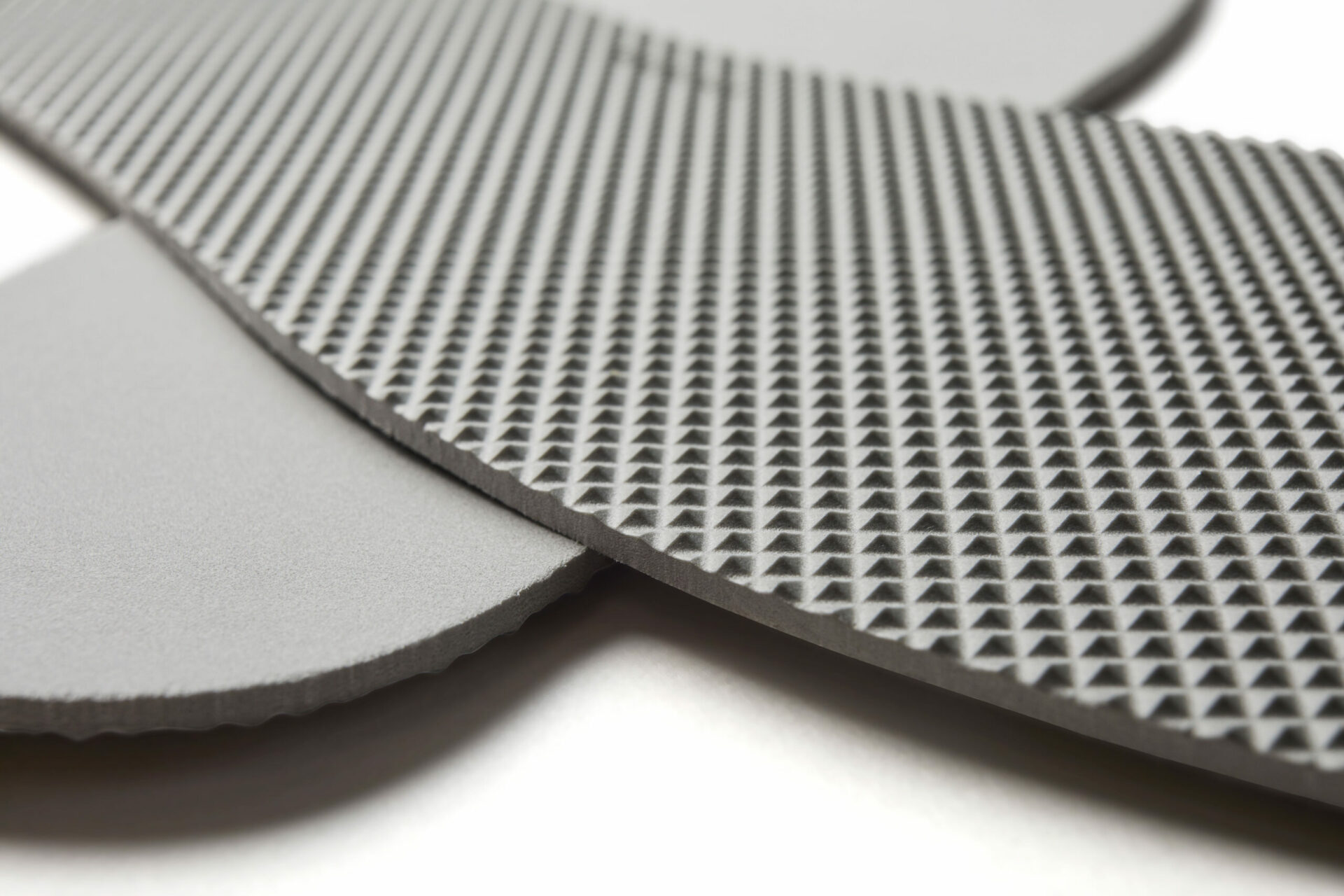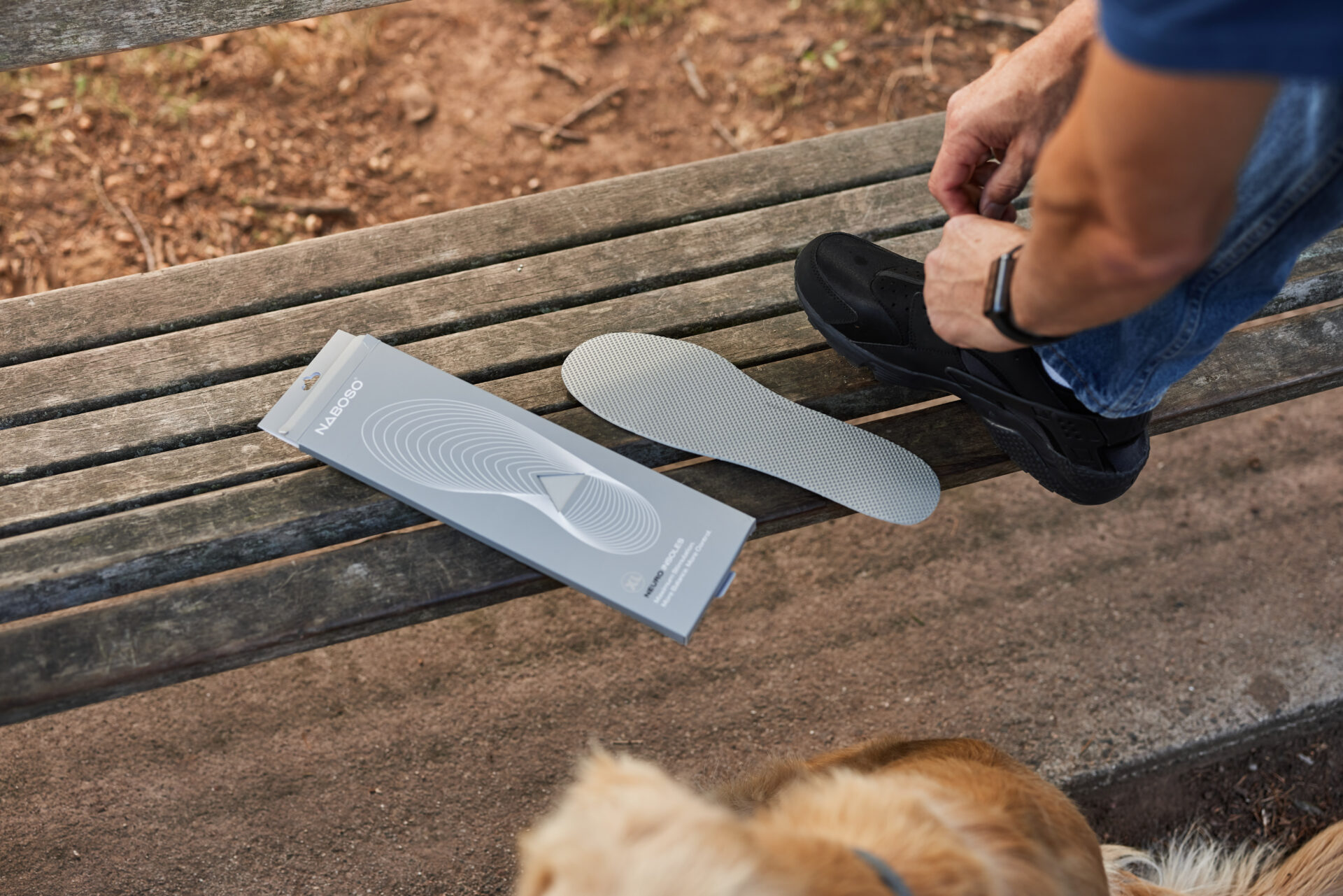Textures with medical purpose
Balance impairment is a common symptom in patients living with neurological conditions such as Multiple Sclerosis (MS), Parkinson’s Disease (PD), post-stroke, spinal cord injury and peripheral neuropathy. From an increased fall risk to reduced independence, compromised dynamic stability can place a heavy emotional burden on these patients and their families.
One of the most effective ways to improve dynamic stability in patients living with neurological conditions is to focus on optimizing sensory stimulation. Touch, whether it be the hands or the feet, creates an access point between the environment, the body, and the brain, with touch being used to improve awareness in space and to better control movement coordination.
Sensory stimulation of the foot leads to a contraction of the intrinsic (deep) muscles of the foot. Intrinsic muscle contraction is not only a critical step in the damping of impact forces but has also been shown to increase the medial arch and build co-activation contractions in the core.
The sensory gateway to movement
The glabrous skin of the plantar foot houses hundreds of special nerves called mechanoceptors. These nerves are sensitive to different stimuli including two-point discrimination, deep pressure, skin stretch and vibration.
Textured insoles for improving posture & gait
Motor development and co-ordination
When we walk, climb and explore our environments, the sensory stimulation of these nerves goes through the brain stem to the thalamus and to the somatosensory cortex of the cerebrum to shape motor development and coordination.
Textures with medical purpose
Balance impairment is a common symptom in patients living with neurological conditions such as Multiple Sclerosis (MS), Parkinson’s Disease (PD), post-stroke, spinal cord injury and peripheral neuropathy. From an increased fall risk to reduced independence, compromised dynamic stability can place a heavy emotional burden on these patients and their families.
One of the most effective ways to improve dynamic stability in patients living with neurological conditions is to focus on optimizing sensory stimulation. Touch, whether it be the hands or the feet, creates an access point between the environment, the body, and the brain, with touch being used to improve awareness in space and to better control movement coordination.
Sensory stimulation of the foot leads to a contraction of the intrinsic (deep) muscles of the foot. Intrinsic muscle contraction is not only a critical step in the damping of impact forces but has also been shown to increase the medial arch and build co-activation contractions in the core.
The sensory gateway to movement
The glabrous skin of the plantar foot houses hundreds of special nerves called mechanoceptors. These nerves are sensitive to different stimuli including two-point discrimination, deep pressure, skin stretch and vibration.
Textured insoles for improving posture & gait
Motor development and co-ordination
When we walk, climb and explore our environments, the sensory stimulation of these nerves goes through the brain stem to the thalamus and to the somatosensory cortex of the cerebrum to shape motor development and coordination.
Improving sensory stimulation through the feet can have an immediate impact in posture, balance & gait
What does research show?
Jean-Ayres, the founder of Sensory Integration Theory, has demonstrated that when touch is lacking, as in the case of wearing socks and footwear for long periods of time, depressed motor and mental functioning can result. Lack of sensory nerve stimulation can lead to impaired muscular movements, overreaction to stress, emotional disturbances and learning deficits.
Research study after research study has demonstrated the power of textured insoles for patients living with chronic neurological conditions, however until Naboso Technology there were no commercially available textured insoles. From TBIs to MS and Parkinson’s, the improvement of posture and balance through the stimulation of the the plantar foot has given hope to many patients.


What does research show?
Jean-Ayres, the founder of Sensory Integration Theory, has demonstrated that when touch is lacking, as in the case of wearing socks and footwear for long periods of time, depressed motor and mental functioning can result. Lack of sensory nerve stimulation can lead to impaired muscular movements, overreaction to stress, emotional disturbances and learning deficits.
Research study after research study has demonstrated the power of textured insoles for patients living with chronic neurological conditions, however until Naboso Technology there were no commercially available textured insoles. From TBIs to MS and Parkinson’s, the improvement of posture and balance through the stimulation of the the plantar foot has given hope to many patients.

